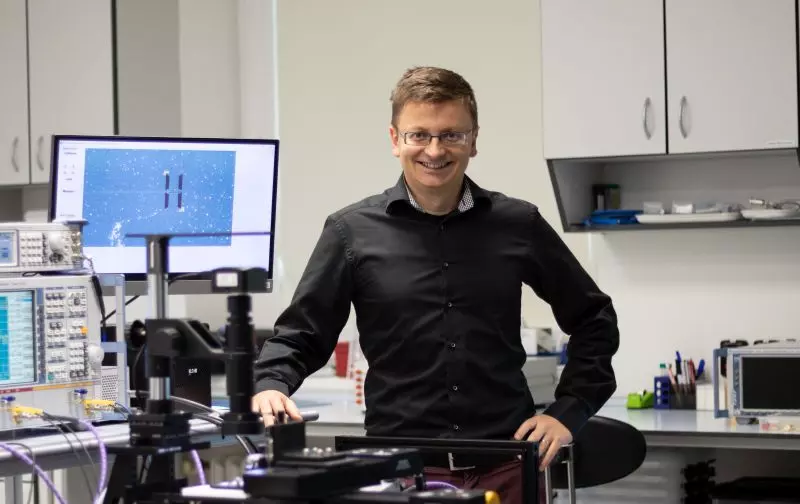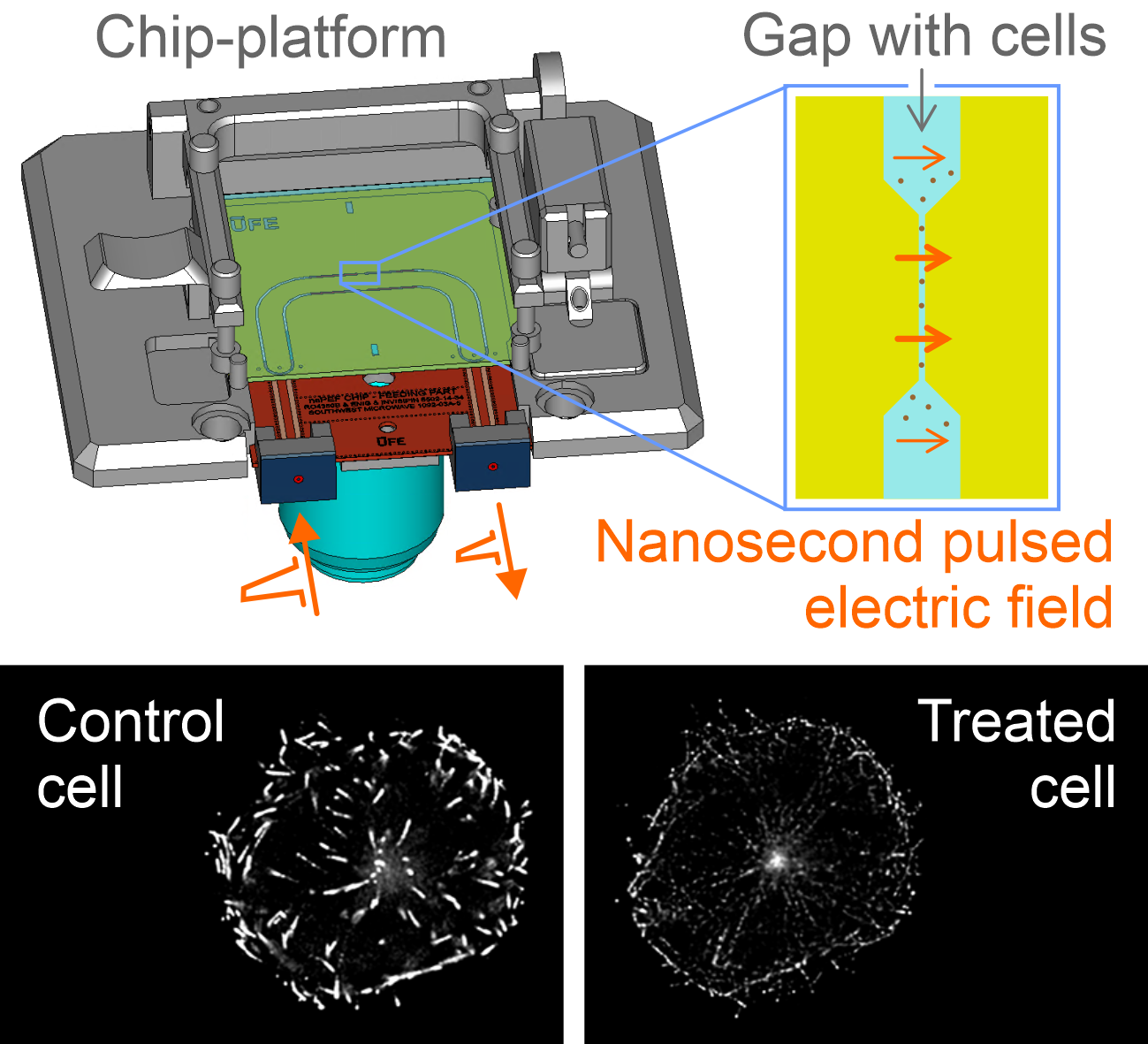Michal Cifra Group
Institute of Photonics and Electronics, CAS

The mission of the Biolectrodynamics team is to probe and influence biosystems using an electromagnetic field at the biomolecular level. To that end, we employ perform advanced electromagnetic concepts, advance microscopy-compatible high-frequency microfluidic chips and micro/nanotechnology enabled tools and computer simulations. In our current projects, we mechanistically explore how short intense electric and electromagnetic pulses can modulate the function of cytoskeletal proteins both. In vitro, such pulses can modulate the self-assembly of tubulin to microtubules or control the fate of cytoskeleton network in cells. These projects advance high-frequency bioelectronics technology for modulating the function of cytoskeleton at the nanoscale level.

Future projects
Our vision is to bring foundations to novel electromagnetic methods which will enable benign and more efficient bio-nanotechnology and medicine to bring us closer to a world where electromagnetic technologies can painlessly prevent, detect and cure diseases. Since classical and quantum electrodynamics and electrostatic forces govern most of interactions between the molecules, we believe electromagnetic field is a proper medium to modulate and control the function of the biological matter. We aim to engineer the electromagnetic field-biomatter interaction in order to steer the action of molecules, particularly proteins, to a desired outcome. This involves both engineering the technology to manipulate the EM field and waves as well as tuning the electromagnetic properties of the biomolecules and their ensembles. We are dedicated to deeper understand how “invisible” fields interact with biological matter for a better understanding of fundamental biophysical processes as well as for developing proof-of-concepts for technologies for a better world.
Institute of Photonics and Electronics
Czech Academy of Sciences
Chaberská 1014/57
182 51 Praha 8
Czech Republic
Michal Cifra
Phone: +420 266 773 454
E-mail: cifra@ufe.cz
Since 2013
Team leader, Institute of Photonics and Electronics of the Czech Academy of Sciences, Czechia
2014 – 2015
Visiting researcher, University of Chicago, James Franck Institute / Physical Sciences Div. (Dept. of Chemistry), Chicago, USA
2010 – 2012
Postdoctoral researcher, Institute of Photonics and Electronics of the Czech Academy of Sciences, Czechia
2009
PhD. in Radioelectronics, Department of Electromagnetic Field, Faculty of Electrical Engineering, Czech Technical University in Prague, Czechia
Krivosudský, Ondrej, Daniel Havelka, Djamel Eddine Chafai, and Michal Cifra.
Microfluidic On-Chip Microwave Sensing of the Self-Assembly State of Tubulin.
Sensors and Actuators B: Chemical 328 (2021): 129068.
Havelka, Daniel, Ilia Zhernov, Michal Teplan, Zdeněk Lánský, Djamel Eddine Chafai, and Michal Cifra.
Lab-on-Chip Microscope Platform for Electro-Manipulation of a Dense Microtubules Network.
Scientific Reports 12, no. 1 (2022): 2462.
Průša, Jiří, Ahmed Taha Ayoub, Djamel Eddine Chafai, Daniel Havelka, and Michal Cifra.
Electro-Opening of a Microtubule Lattice in Silico.
Computational and Structural Biotechnology Journal 19 (2021): 1488–96.
Chafai, Djamel Eddine, Vadym Sulimenko, Daniel Havelka, Lucie Kubínová, Pavel Dráber, and Michal Cifra.
Reversible and Irreversible Modulation of Tubulin Self‐Assembly by Intense Nanosecond Pulsed Electric Fields.
Advanced Materials 31, no. 39 ( 2019): 1903636.